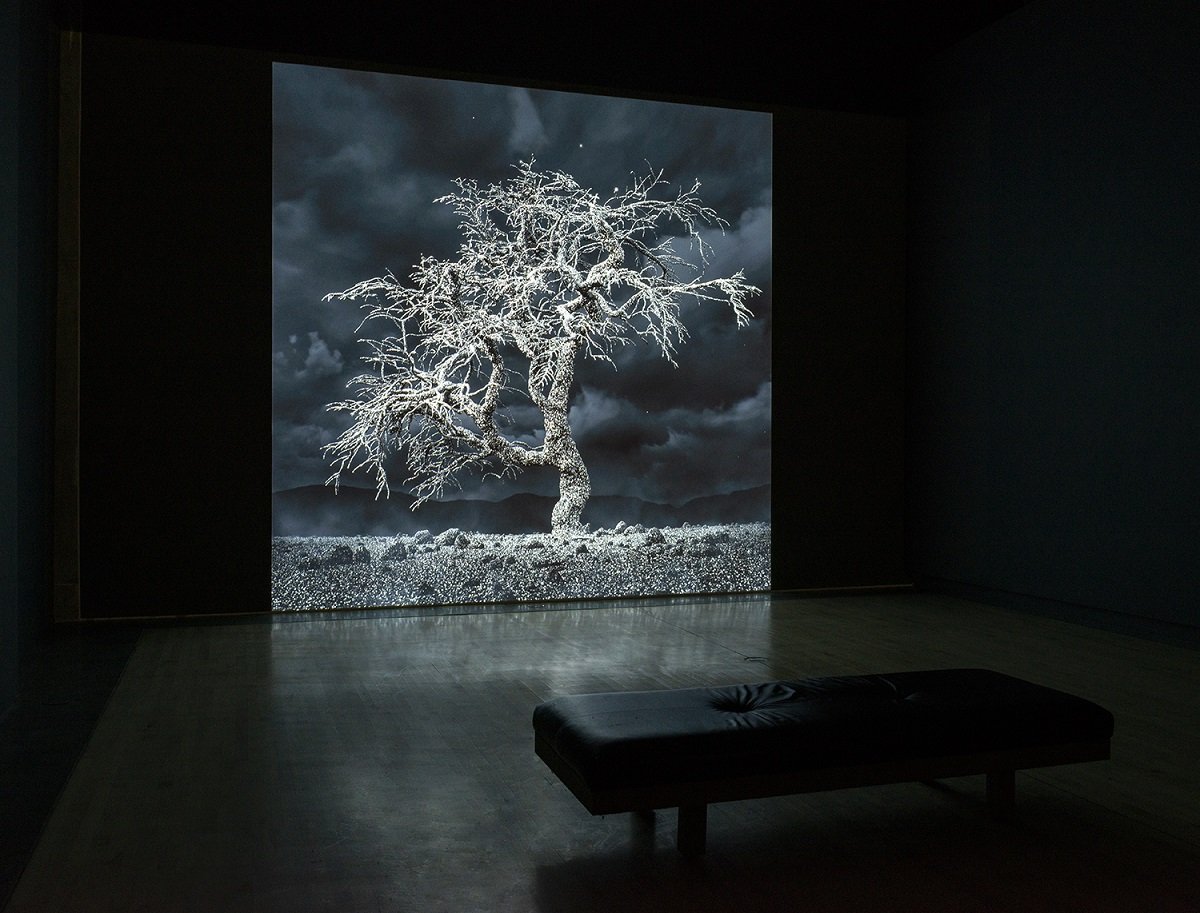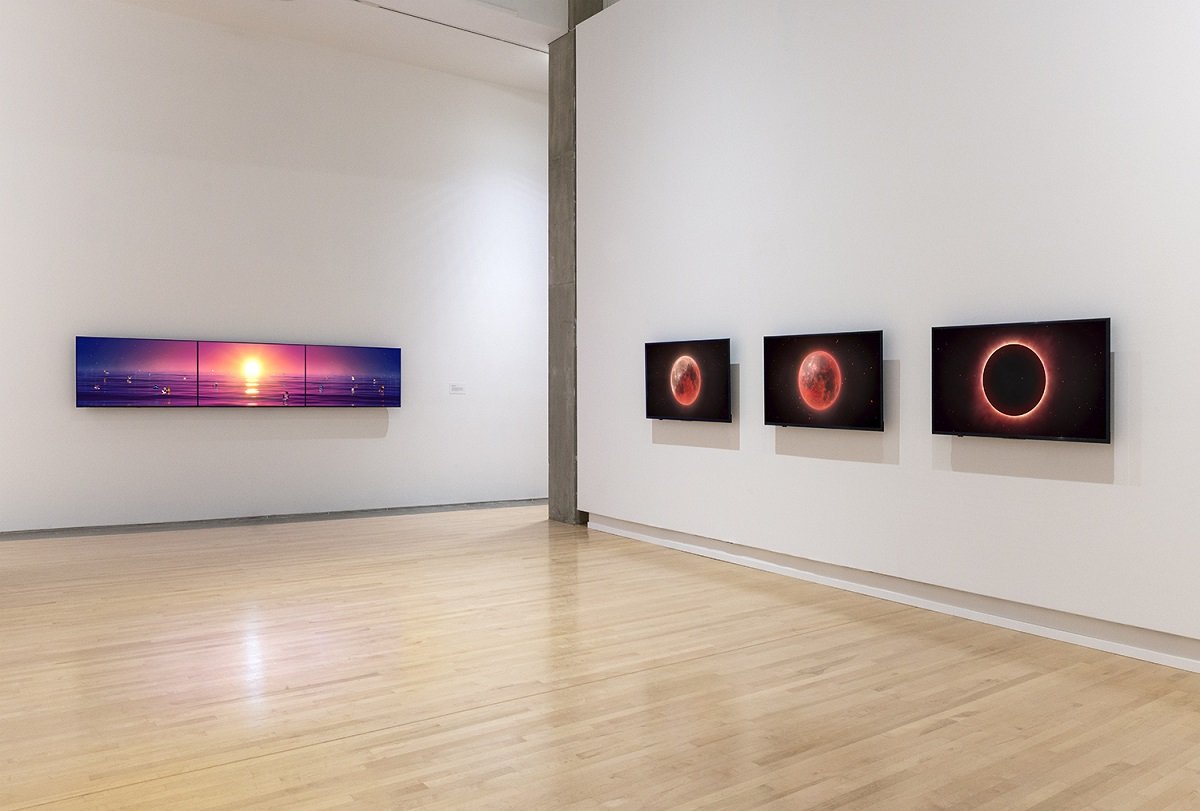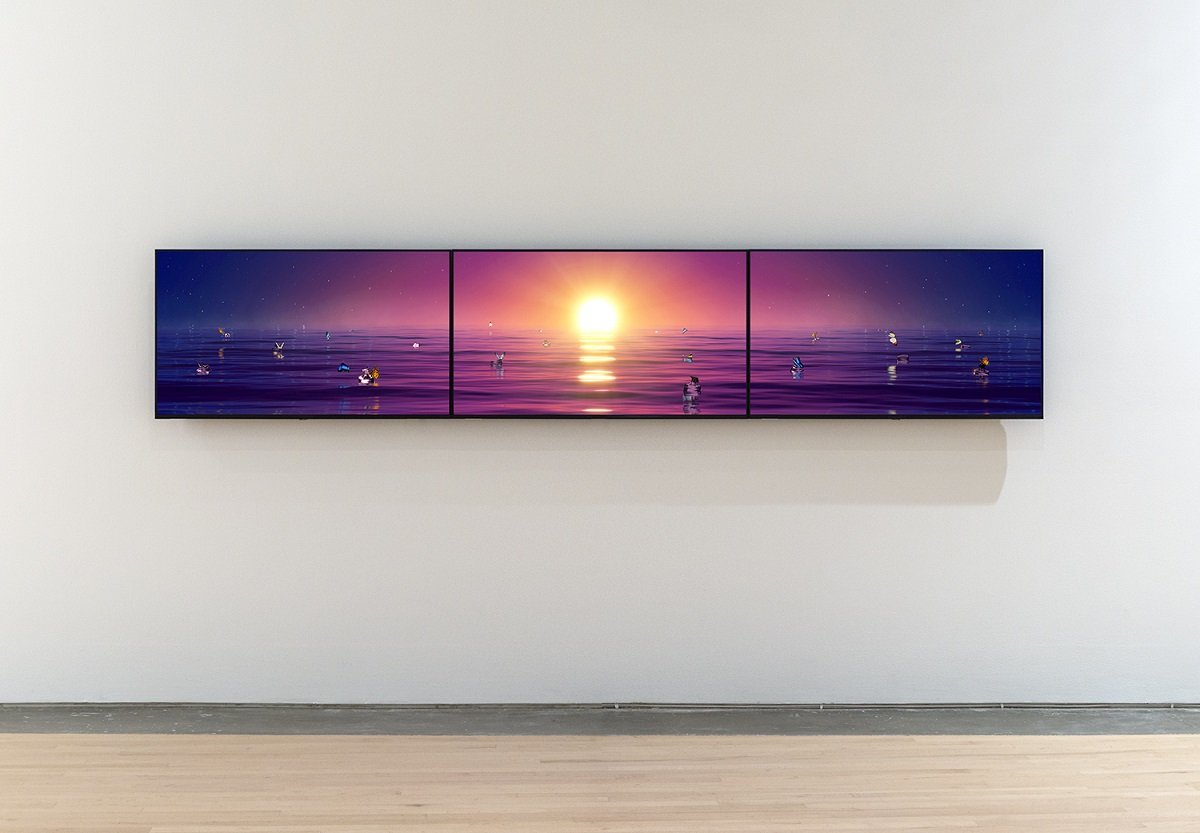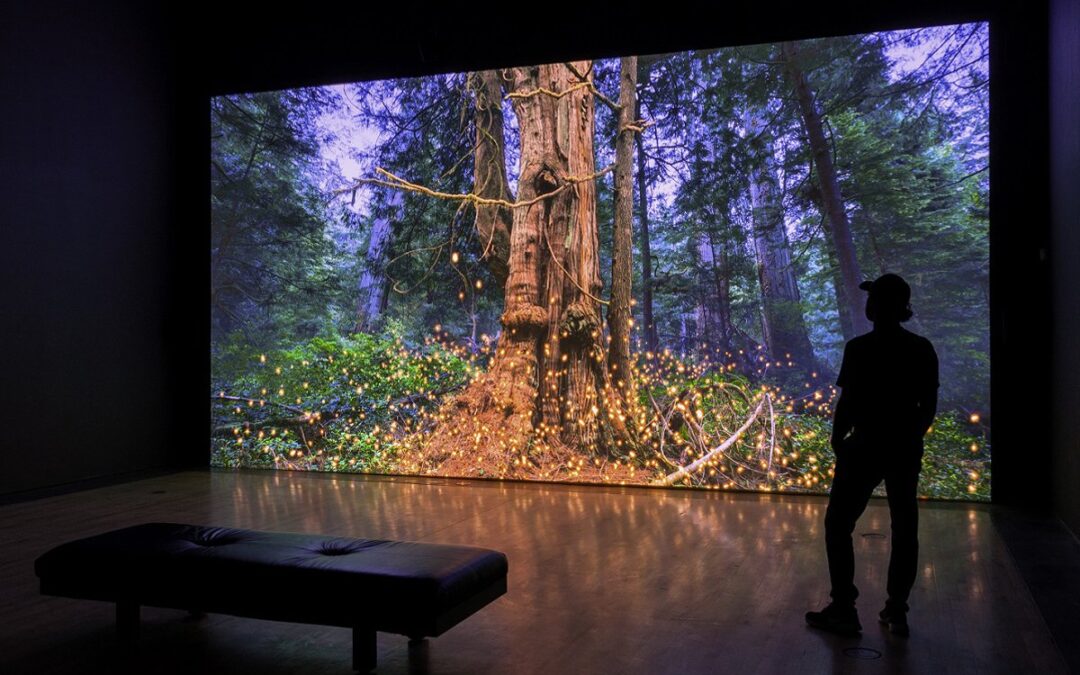Kelly Richardson
Using beauty – and technology – to tell dystopic tales about environmental collapse.
Lyn Richards reviews ‘Halcyon Fog’ at Kamloops Art Gallery
Galleries West
Over the last century, beauty – once art’s darling – acquired a bad reputation as a mere seductress whose pleasures were shallow and fleeting. But Victoria-based artist Kelly Richardson knows beauty can do so much more. At first, her video installations for Halcyon Fog, on view at the Kamloops Art Gallery until April 2, seem to be about enticing us to gaze in awe at gorgeous landscapes. And they do. But then we realize she is taking the Romantic sublime to a new level by transporting us into an immersive hyper-real setting, replete with purple skies and cartoon butterflies, to tell dystopic tales of the 21st century.
With her step into computer-generated imagery, Richardson, a professor at the University of Victoria, implicates us all in the things our species has done, is doing, or will do to the Earth. She points out the hubris in our fantasy of human specialness, our refusal to acknowledge we’re simply one of many species within the world’s astonishing web of life, and our denial that whatever we do to the environment, we do to ourselves as well. Richardson courts irony by turning the same digital media that potently enables our detachment from the natural world into a powerful tool for examining the myth of endless growth driving humanity’s misguided labours toward a catastrophic future.
In Embers and the Giants, Richardson targets the contributions unsustainable logging practices make to climate change. Flickering lights swarm round a massive tree like festive fireflies celebrating the mother tree’s great age, or, perhaps, a flurry of embers coughed up by wildfire. Above the old-growth coastal rainforest is a rose-violet sky, one not seen in nature. Those flickering lights are tiny drones mapping the forest floor, perhaps for the “harvest” of such ancient beauties. You won’t want to remember that when you next think of old-growth forests, but you will.

The Pillars of Dawn project includes both still and moving images set in what Richardson calls the “deep future.” On entering, viewers encounter a set of large digital prints. Each image of a solitary tree is printed in white with a tapestry-like effect on a black ground of apparently endless depth. Vladimir and Estragon might wait eternally for Godot beside such a tree. A floor-to-ceiling video installation in the same spare, black-and-white aesthetic shows the heavily encrusted branches of a lone tree lifting and subsiding in the wind. Tree and landscape twinkle with millions of tiny crystals. The bleak beauty of this desertscape feels even more desolate when we understand that each individually sculpted 3D digital crystal represents one of the billions of species now living. Have horrific climatic conditions rendered crystalline the carbon core of all organic life-forms?

Each video screen in the Halo triptych is filled with a view of the moon from Earth. In Halo I and II, a red moon shape-shifts in heat distortion, veiled by drifting smoke and flying embers. In her talk, Richardson suggests a link to the UN’s recent call of a “code red” for humanity. The dark side of a third-and-future moon eclipses the sun in Halo III, producing a ring of fire that evokes the spectre of a planet ablaze – a real possibility given the growing severity of wildfires around the world.

The jewel in all these digital riches is the mesmerizing Journey to the After, completed for this exhibition. Slanting light from a low sun – rising or setting? – burnishes tear gas cannisters bobbing in a vast ocean. The scene is somehow rendered more ominous by the brightly coloured butterflies that hover over and perch on the cannisters and the sound of a raven’s croak. How does this unsettling vision so strongly offer hope, albeit one that would require concerted action, including protests, to shift government and corporate policies? Maybe it’s the butterflies.
A large format copy of the Declaration on Understory within the Forests of Secwepemcúl’ecw hangs in the resource area adjacent to the main gallery. This document, signed by 17 Kukpi7s (chiefs) sets out their claim of rights and responsibilities for management of forest understory resources on the unceded traditional lands of the Secwépemc (Shuswap) peoples. The decision by curator Charo Neville and Emily Hope, the gallery’s education director, to display the declaration with this exhibition reflects the gallery’s strong engagement with Indigenous people in the region and offers an exemplar of the personal and social agency that Richardson suggests we need to address current environmental predicaments. ■
Kelly Richardson, Halcyon Fog, at the Kamloops Art Gallery from Jan. 22 to April 2, 2022.
Photo credits: SITE Photography
